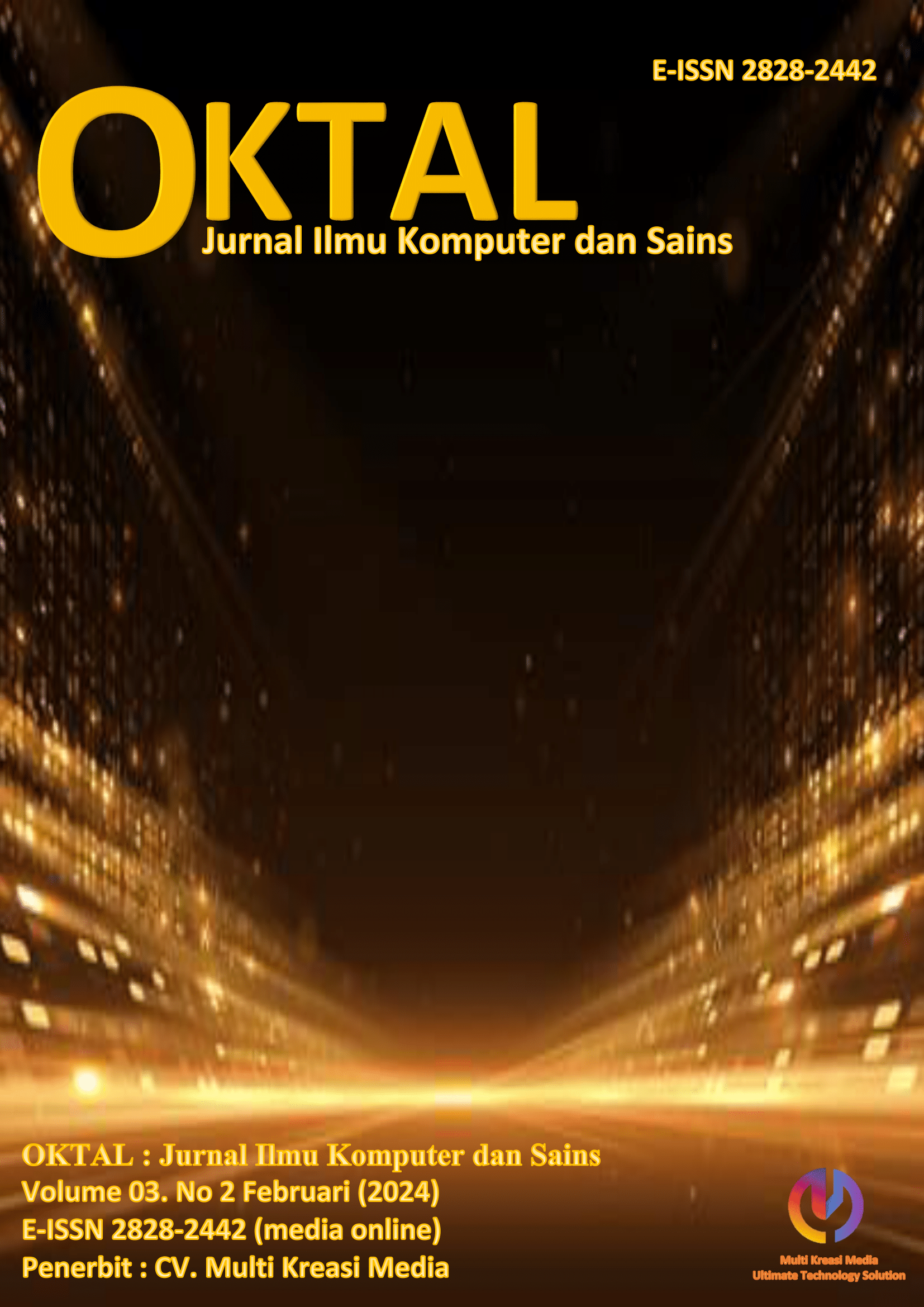Analisis Lahan Pertanian Rawan Banjir Menggunakan Metode Multi Atribut Utility Theory Berbasis Sistem Informasi Geografis
Keywords:
GIS, Agricultural Land, Floods, Multi Attribute Utility TheoryAbstract
Abstract-West Java has various regional conditions. The condition of the area certainly has the potential for disasters that have a significant impact on the agricultural sector. Floods are one of the factors that damage agricultural land. Flood risk management plays an important role in guiding the government in making timely and appropriate decisions for flood rescue and relief. This study aims to examine flood risk assessment in the agricultural sector in West Java. The Multi Attribute Utility Theory method is used to solve problems related to spatial planning and disaster management because it is systematic and suitable for solving complex problems such as the agricultural sector. The results showed that the areas of agricultural land in West Java that were highly prone to flooding included Kuningan, Bogor, Tasikmalaya, Sumedang, West Bandung, Bekasi City, Tasikmalaya City, Bogor City, Cimahi City. Furthermore, the results of this study were visualized by mapping flood risk using GIS. This can be used for flood disaster management efforts. This research is expected to help policy making at the Department of Agriculture and Food Security in monitoring agricultural land that is prone to flooding in order to minimize the occurrence of flood disasters in the agricultural sector.
References
Applanaidu, S. D., Bakar, N. A., & Baharudin, A. H.(2014). An Econometric Analysis of Food Security and Related Macroeconomic Variables in Malaysia A Vector Autoregressive Approach (VAR). UMKProcedia, 1 (October 2013), 93–102. https://doi.org/10.1016/j.umkpro.2014.07.012
Aprillya, M. R., Suryani, E., & Dzulkarnain, A. (2019). System Dynamics SimulationModel to Increase Paddy Production forFood Security. Journal of Information Systems Engineering and Business Intelligence 5(1), 67 https://doi.org/10.20473/jisebi.5.1.67-75 Bala, B. K.,
Bhuiyan, M. G. K., Alam, M. M., Arshad,
F. M., Sidique, S. F., & Alias, E. F. (2017).Modelling of supply chain of rice inBangladesh. International Journal of Systems Science: Operations and Logistics, 4(2), 181–197. https://doi.org/10.1080/ 23302674.2016.1179813
da Silva, L. B. L., Humberto, J. S., Alencar, M. H., Ferreira, R. J. P., & de Almeida, A. T.(2020). GIS-based multidimensional decision model for enhancing flood risk prioritization in urban areas. International Journal of Disaster Risk Reduction, 48 (December 2019).
https://doi.org/10.1016/j.ijdrr.2020.101582
Dong, Y., Frangopol, D. M., & Sabatino, S. (2016). Author’s Accepted Manuscript. ReliabilityEngineering and System Safety.https://doi.org/10.1016/j.ress.2016.02.002
Kailiponi, P. (2010). Analyzing evacuation decisionsusing multi-attribute utility theory (MAUT). Procedia Engineering, 3, 163–174. https://doi.org/10.1016/j.proeng.2010.07.016
Levy, J. K., Hartmann, J., Li, K. W., An, Y., & Asgary, A. (2007). Multi-Criteria Decision Support Systems for Flood Hazard Mitigation and Emergency Response in Urban Watersheds1 JAWRA Journal of theAmerican Water Resources Association Volume 43, Issue 2. JAWRA
Journal of theAmerican Water Resources Association, 43(2), 346–358. http://onlinelibrary.wiley.com/doi/10.1111/j1752-1688.2007. 00027.x/abstract
Li, Q., Zhou,J.,Liu,D.,&Jiang, X.(2012).Researchon flood risk analysis and evaluation method based on variable fuzzy sets and information diffusion. Safety Science, 50(5), 1275–1283. https://doi.org/10.1016/j.ssci.2012.01.007
Limbong, T., & Simarmata, J. (2020). Determining Effective Subjects Online Learning (Study and Examination) with Multi-Attribute Utility Theory (MAUT) Method. Jurnal RESTI (Rekayasa Sistem Dan TeknologiInformasi), 4(2), 370–376.https://doi.org/10.29207/resti.v4i2.1851
Luu, C., von Meding, J., & Mojtahedi, M. (2019). Analyzing Vietnam’s national disaster loss database for flood risk assessment usingmultiple linear regression-TOPSIS. International Journal of Disaster Risk Reduction, 40(August 2018), 101153. https://doi.org/10.1016/j.ijdrr.2019.101153
Mahbubi, A. (2013). Model Dinamis Supply Chain Beras Berkelanjutan. Jurnal Manajemen Dan Agribisnis, 10(2), 81–89.
Medeiros, C. P., Alencar, M. H., & de Almeida, A. T.(2017). Multidimensional risk evaluation of natural gas pipelines based on a multicriteriadecision model using visualization tools and statistical tests for global sensitivityanalysis. Reliability Engineering and System Safety, 165(April), 268–276. https://doi.org/10.1016/j.ress.2017.04.002
Muflihah, Y., Setyadi, H. J., Rustanto, I., Dini, N. S.,Mardhiana, H., & Pakarbudi, A. (2017). Isu Implementasi Wide Area Network Pada Perusahaan BUMN. 2(April),18–22. https://doi.org/10.13140/RG.2.2.12759.68008
Naylor, R. L., Battisti, D. S., Vimont, D. J., Falcon, W. P., & Burke, M. B. (2007). Assessing risks of climate variability and climate change for Indonesian rice agriculture.104(19).
Nurdiawan, O., Putri, H., Studi, P., & Informasi, T. (2014). Pemetaan daerah rawan banjir berbasis sistem informasi geografis dalam upaya mengoptimalkan langkah antisipasi bencana. 1–9.
Pergher, I., & Almeida, A. T. De. (2018). A multi- attibute, rank-dependent utility model for selecting dispatching rules. Journal of Manufacturing Systems, 46, 264–271. https://doi.org/10.1016/j.jmsy.2018.01.007
Stuart, A. M., Devkota, K. P., Sato, T., Pame, A. R. P., Balingbing, C., My Phung, N. T., Kieu, N. T., Hieu, P. T. M., Long, T. H., Beebout,S., & Singleton, G. R. (2018). On-farm assessment of different rice crop management practices in the Mekong Delta,Vietnam, using sustainability performance indicators. Field Crops Research, 229(October), 103–114. https://doi.org/10.1016/j.fcr.2018.10.001
Tanesib, J. L., & Warsito, A. (2018). Pemetaan Daerah Rawan Banjir Dengan Penginderaan Kupang Timur Kabupaten Kupang Provinsi Nusa Tenggara Timur. 3(1), 73–79.
Xiao, Y., Yi, S., & Tang, Z. (2017). Integrated floodhazard assessment based on spatial ordered weighted averaging method considering spatial heterogeneity of risk preference. Science of the Total Environment, 599–600,1034–1046. https://doi.org/10.1016/j.scitotenv.2017.04.218




















